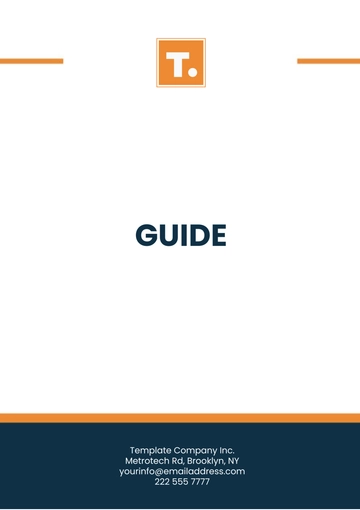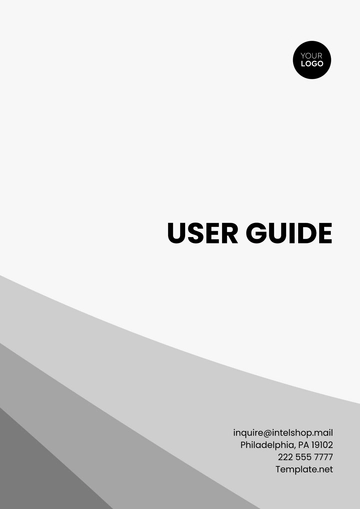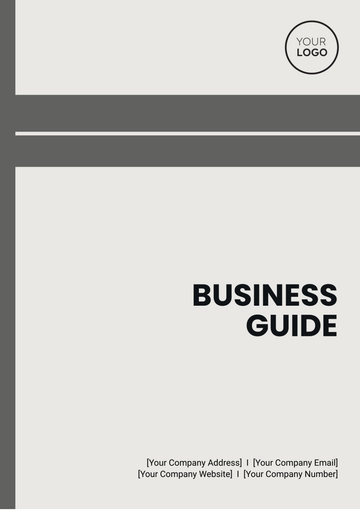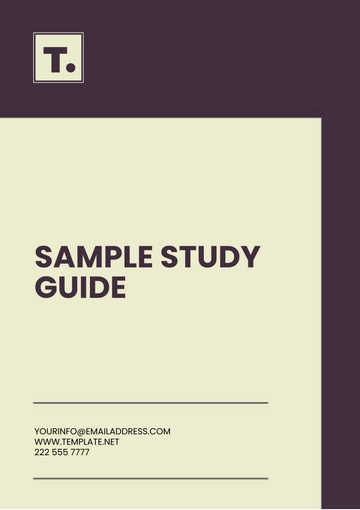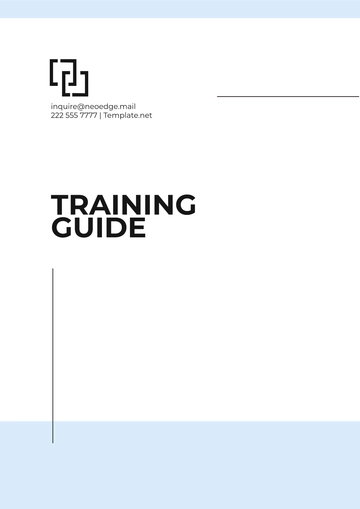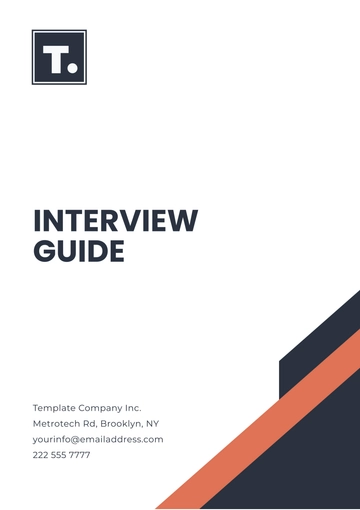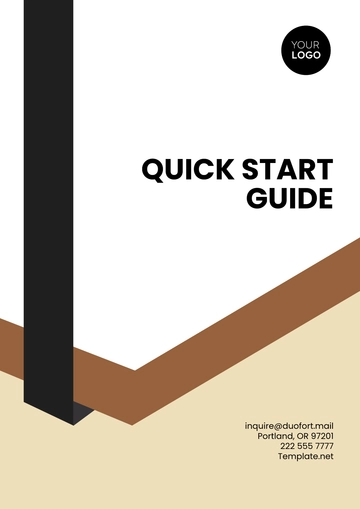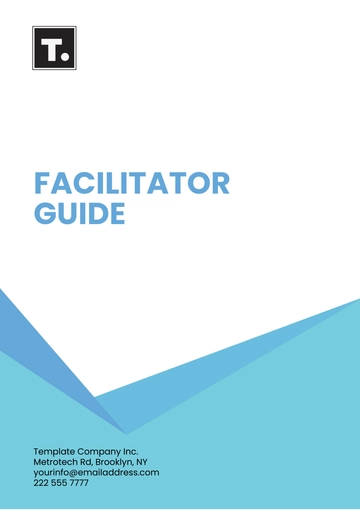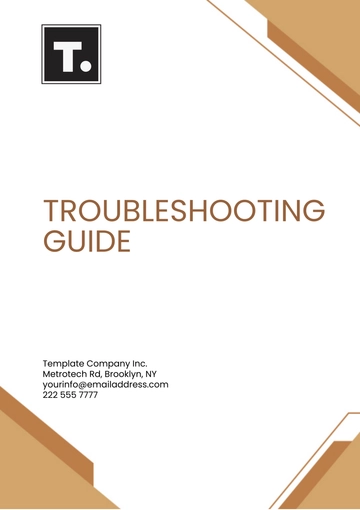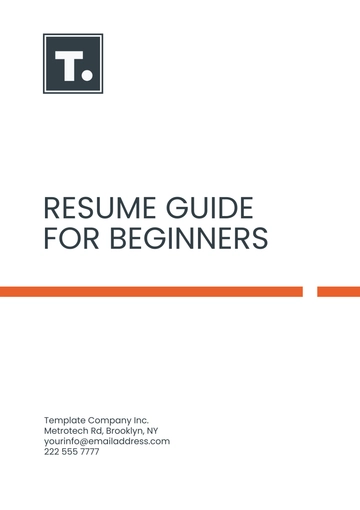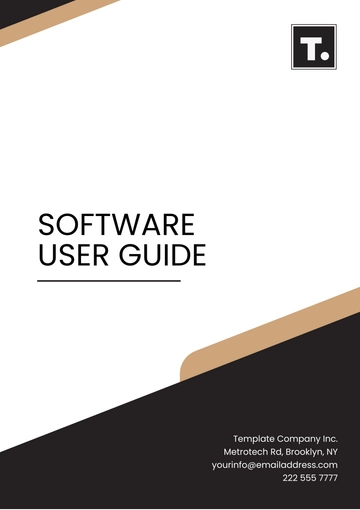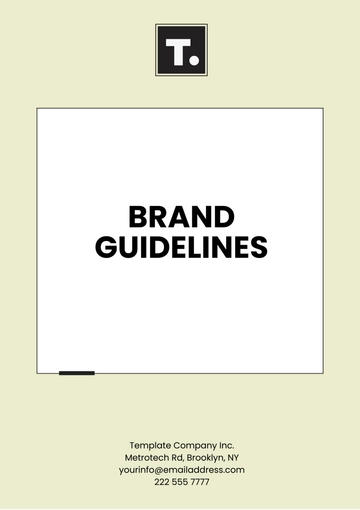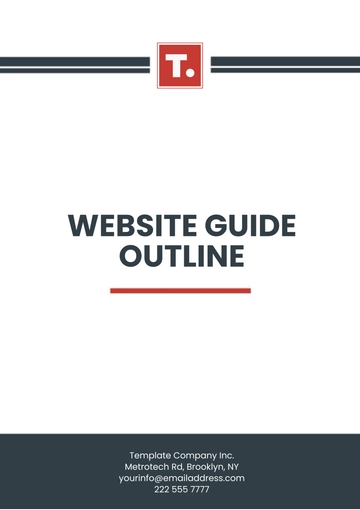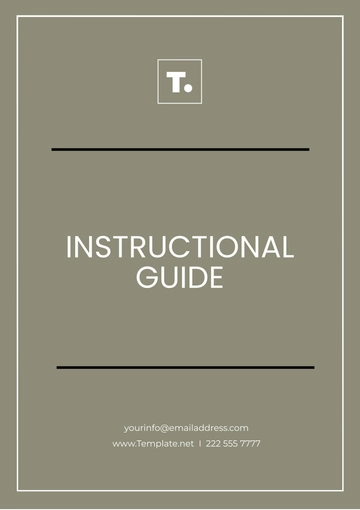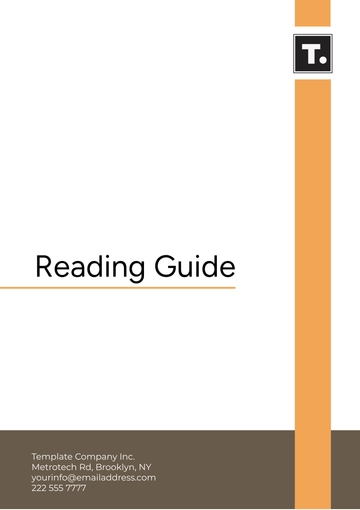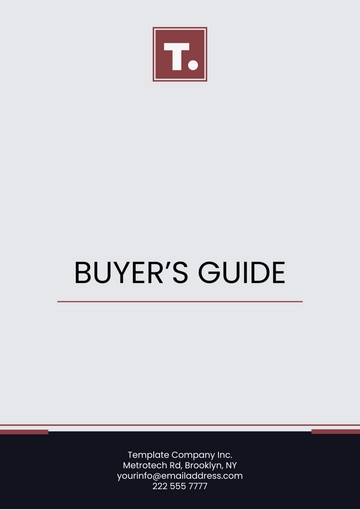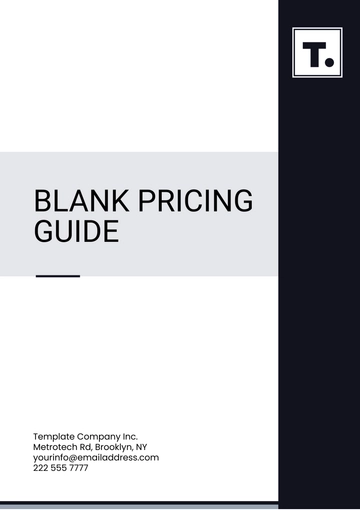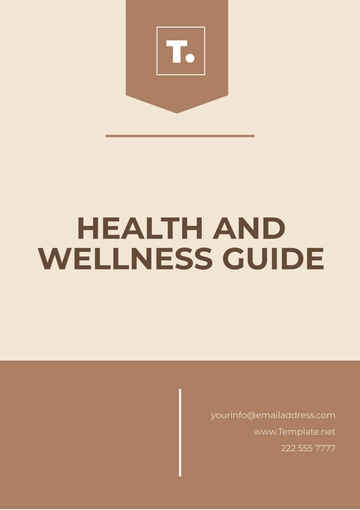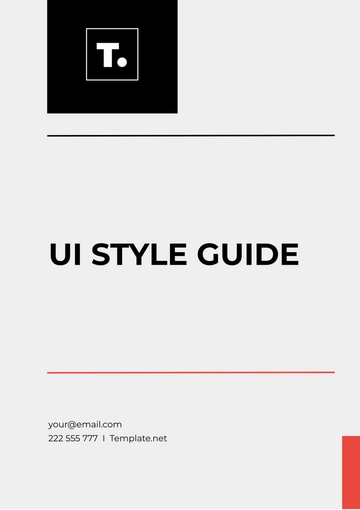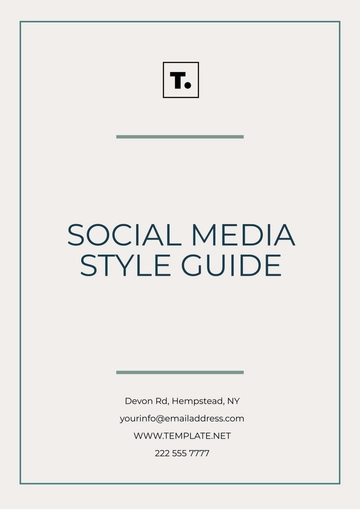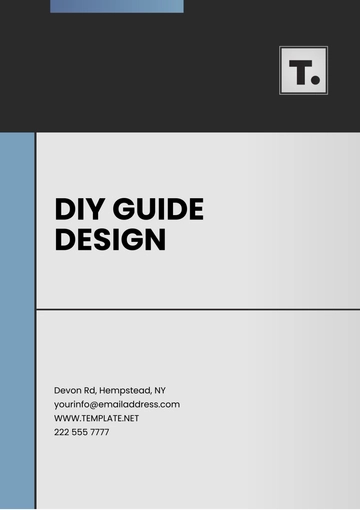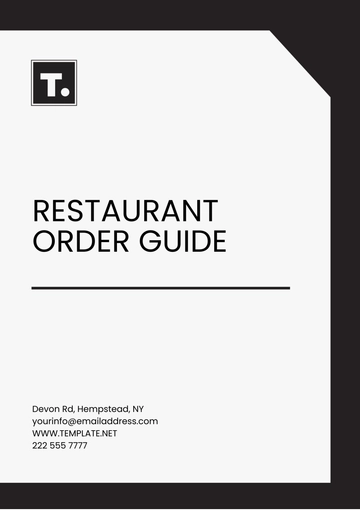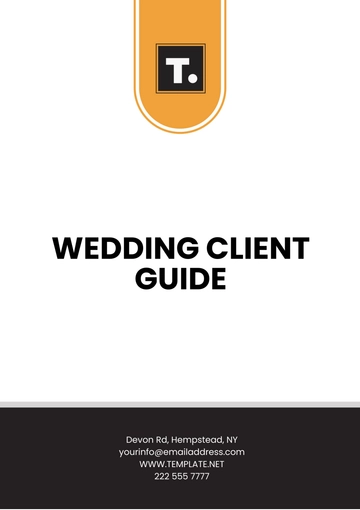Free Regulatory Change Management Guide in Advertising

Introduction
Purpose of this Guide
The purpose of this Regulatory Change Management Guide is to provide a structured approach for managing regulatory changes in the advertising industry, ensuring that [Your Company Name] maintains compliance while achieving its advertising goals. This guide aims to establish clear procedures and responsibilities for handling regulatory changes effectively.
Scope of Regulatory Changes
This guide comprehensively covers regulatory changes related to advertising practices across all advertising mediums, including print, digital, and broadcast. It encompasses changes in content requirements, labeling standards, endorsement disclosures, and any other regulatory aspects affecting advertising campaigns.
Applicability
This guide is designed for the use of [Your Company Name], a leading advertising firm headquartered at [Your Company Address]. It is specifically intended to support [Your Name] and the dedicated regulatory compliance team in their efforts to navigate and respond to evolving advertising regulations.
Regulatory Landscape
A. Overview of Regulatory Bodies
In the United States, the advertising industry is subject to oversight by various regulatory bodies, each with specific areas of jurisdiction. These include:
1. Federal Trade Commission (FTC): The FTC plays a pivotal role in regulating advertising practices by enforcing truth-in-advertising standards and consumer protection laws.
2. Food and Drug Administration (FDA): The FDA governs advertising related to pharmaceuticals, medical devices, and food products, ensuring accuracy and safety in advertising claims.
3. Federal Communications Commission (FCC): The FCC regulates advertising in the realm of broadcast media, including television and radio, and enforces rules regarding content, sponsorship disclosures, and more.
B. Key Regulations in Advertising
To navigate the complex regulatory landscape, it is essential to be aware of and adhere to key advertising regulations, including but not limited to:
1. Lanham Act: The Lanham Act provides remedies for false advertising and unfair competition, allowing competitors to take legal action against misleading advertising.
2. Truth in Advertising Laws: These laws prohibit deceptive advertising practices, requiring clear and accurate representations in advertising content.
3. CAN-SPAM Act: The CAN-SPAM Act establishes rules for commercial email communications, including opt-out requirements, accurate sender information, and content transparency.
Regulatory Change Identification
A. Continuous Monitoring
[Your Company Name] prioritizes continuous monitoring of regulatory changes as a fundamental aspect of proactive compliance management. This involves:
1. Subscribing to regulatory update services: We subscribe to industry-specific regulatory update services, ensuring that we receive timely notifications of any amendments or new regulations that pertain to advertising.
2. Internal reporting system: Our compliance team maintains an internal reporting system where employees can flag potential regulatory changes they come across in their research or daily work.
B. Internal and External Sources
To maintain a comprehensive understanding of regulatory changes, [Your Company Name] leverages a combination of internal and external sources:
1. Internal Sources: Our compliance team regularly collaborates with other departments, such as legal and marketing, to gather insights on potential regulatory shifts that may impact our advertising strategies.
2. External Sources: We also monitor external sources, including government websites, industry publications, and newsletters, to stay well-informed about any impending regulatory updates.
C. Risk Assessment
Upon identifying potential regulatory changes, our dedicated compliance team conducts a thorough risk assessment to determine the impact on our advertising practices:
1. Cross-Functional Team Formation: We assemble a cross-functional team comprising experts from various departments, including legal, marketing, and compliance, to assess the regulatory change's implications from different angles.
2. Impact on Current Practices: We meticulously evaluate how the regulatory change could affect our current advertising practices, identifying specific areas of concern or adaptation.
3. Resource Evaluation: Our team assesses the resources required to implement necessary changes, such as manpower, time, and budget allocations.
Impact Assessment
A. Cross-Functional Team Formation
The formation of a cross-functional team is a key step in assessing the impact of regulatory changes on our advertising strategies. This team includes:
1. Compliance Experts: Compliance specialists who bring in-depth knowledge of regulatory requirements and compliance best practices.
2. Legal Advisors: Legal professionals who provide legal interpretations of the regulatory changes and offer guidance on compliance.
3. Marketing Representatives: Marketing experts who assess the potential impact on advertising campaigns and consumer messaging.
4. Finance Representatives: Financial analysts who evaluate budgetary implications and resource allocation.
B. Impact on Current Practices
Our cross-functional team collaboratively examines the regulatory change's potential impact on our current advertising practices. This involves:
1. Review of Advertising Content: Scrutinizing existing advertising content to identify areas that may need modification to comply with new regulations.
2. Labeling and Packaging: Evaluating any changes required in product labeling and packaging to adhere to updated regulations.
3. Endorsement Disclosures: Ensuring that endorsement disclosures align with the revised requirements.
4. Media Selection: Assessing if the regulatory change affects the choice of advertising channels and mediums.
C. Resource Evaluation
Resource evaluation is a crucial aspect of impact assessment:
1. Manpower: We determine if additional staff training or hiring is necessary to manage the compliance changes effectively.
2. Budget Allocation: We allocate budgets for necessary modifications, such as content redesign, legal consultations, and compliance audits.
Regulatory Change Communication
A. Internal Communication Strategy
Effective communication within [Your Company Name] is crucial to ensure all stakeholders are informed and aligned regarding regulatory changes:
1. Communication Plan: We create a detailed communication plan outlining the key messages, communication channels, and timelines for sharing information within the organization.
2. Training Workshops: We conduct training workshops to educate employees on the regulatory changes and their implications for their respective roles.
3. Feedback Mechanism: An open feedback mechanism is established to allow employees to ask questions and seek clarifications regarding the changes.
B. External Stakeholder Communication
Transparent communication with external stakeholders is equally important:
1. Client Notifications: If the regulatory change impacts our clients' advertising campaigns, we promptly inform them of the necessary adjustments and provide guidance.
2. Supplier and Partner Engagement: We collaborate with suppliers and partners to ensure they are aware of and compliant with the new regulations.
3. Industry Collaboration: Active participation in industry forums and associations allows us to share insights and best practices related to regulatory changes.
C. Timeline for Communication
We adhere to a predefined timeline for communication, ensuring that all relevant parties are informed well in advance of the regulatory changes. This timeline is documented in our communication plan.
Compliance Strategy
A. Compliance Framework
[Your Company Name] maintains a robust compliance framework to navigate regulatory changes effectively:
1. Policy Review: We conduct regular reviews of our compliance policies to ensure they align with the latest regulatory requirements.
2. Standard Operating Procedures (SOPs): SOPs are updated to incorporate new compliance measures and guidelines.
3. Audit and Assessment: Periodic audits are conducted to assess compliance with the updated framework.
B. Compliance Responsibility Matrix
To establish clear accountability, we maintain a compliance responsibility matrix:
1. Assigned Roles: Each team member is assigned specific compliance responsibilities based on their expertise and job function.
2. Accountability: Team members are held accountable for their assigned compliance tasks, and progress is regularly monitored.
C. Documentation Requirements
Comprehensive documentation is essential for compliance:
1. Record Keeping: We maintain meticulous records of all regulatory changes, assessments, and compliance actions taken.
2. Documented Procedures: All compliance procedures and changes are documented for reference and audit purposes.
3. Reporting: Regular reporting on compliance status and any exceptions is communicated to relevant stakeholders.
Implementation and Testing
A. Phased Implementation Plan
To ensure a smooth transition and minimize disruptions, [Your Company Name] follows a phased implementation plan:
Phase 1 - Assessment: This phase focuses on a detailed analysis of the regulatory change's impact, including resource allocation and identification of specific changes required.
Phase 2 - Preparation: During this phase, we prepare the necessary materials, such as updated advertising content, labeling, and compliance documentation.
Phase 3 - Pilot Testing: We conduct pilot tests to evaluate the effectiveness of the changes on a small scale before full-scale implementation.
Phase 4 - Full Implementation: Once pilot testing is successful, we proceed to full implementation across all relevant advertising campaigns and channels.
B. Testing and Validation
Comprehensive testing is a critical component of the implementation process:
1. Content Testing: All advertising content is thoroughly reviewed and tested to ensure it complies with the new regulations.
2. Labeling and Packaging: If applicable, labeling and packaging are validated to ensure accuracy and compliance.
3. Endorsement Disclosures: We verify that endorsement disclosures are clear and meet regulatory requirements.
4. Quality Assurance: Rigorous quality assurance checks are performed to guarantee compliance across all advertising materials.
C. Tracking Milestones
We establish clear milestones to track progress during implementation:
1. Timeline Tracking: We closely monitor the implementation timeline to ensure that each phase stays on schedule.
2. Key Performance Indicators (KPIs): We define KPIs to measure the effectiveness of the changes and their impact on compliance.
3. Issue Resolution: A process for identifying and resolving any issues or challenges during implementation is in place.
Training and Awareness
A. Employee Training Program
[Your Company Name] invests in comprehensive training programs to ensure that employees are well-prepared for regulatory changes:
1. Training Modules: We develop training modules tailored to different departments and roles within the organization, focusing on the specific compliance requirements relevant to each.
2. Interactive Workshops: Hands-on workshops and seminars are conducted to engage employees and enhance their understanding of the changes.
3. Knowledge Assessment: Employees undergo knowledge assessments to evaluate their comprehension of the new regulations.
B. Stakeholder Awareness Campaign
Beyond our internal team, we also run awareness campaigns for external stakeholders:
1. Client Workshops: We offer workshops and informational sessions to educate clients about the regulatory changes and how they may impact their advertising campaigns.
2. Suppliers and Partners: Collaborative efforts with suppliers and partners ensure that they are informed and aligned with our compliance measures.
C. Knowledge Assessment
Regular knowledge assessments are conducted to gauge the effectiveness of our training and awareness efforts:
1. Quizzes and Tests: Employees and stakeholders are periodically tested on their understanding of the regulatory changes and compliance requirements.
2. Feedback Mechanism: We encourage participants to provide feedback on training and awareness programs, allowing us to make improvements as needed.
Monitoring and Reporting
A. Ongoing Monitoring Process
[Your Company Name] maintains an ongoing monitoring process to ensure continuous compliance:
1. Compliance Dashboards: We utilize compliance dashboards that provide real-time visibility into the status of compliance across all advertising campaigns.
2. Audits and Inspections: Regular audits and inspections are conducted to identify and address any compliance deviations.
3. Incident Reporting: Employees are encouraged to report any compliance incidents promptly, which are then investigated and resolved.
B. Compliance Reporting
Regular reporting is essential to keep stakeholders informed:
1. Monthly Compliance Reports: We generate monthly compliance reports that provide an overview of compliance status, highlighting any areas that may require attention.
2. Ad Hoc Reporting: In the event of significant regulatory changes, ad hoc reports are generated to provide immediate updates to stakeholders.
3. Escalation Procedures: Clear escalation procedures are in place to address any critical compliance issues that may arise.
Documentation and Record Keeping
A. Document Repository
[Your Company Name] maintains a secure and organized document repository to centralize all compliance-related documentation:
1. Digital Repository: We utilize a secure digital platform for storing documents, making them easily accessible to authorized personnel.
2. Version Control: Documents are systematically version-controlled to ensure that the latest compliance information is always available.
3. Access Control: Access to the repository is restricted to authorized personnel, and permissions are managed carefully.
B. Record Retention Policies
To ensure compliance with record retention requirements, [Your Company Name] follows established policies:
1. Retention Periods: We maintain records as per legal and regulatory requirements, specifying retention periods for different types of documents.
2. Document Destruction: Documents are securely destroyed at the end of their retention period, following approved destruction procedures.
3. Archival: Important historical documents are archived for reference and regulatory audits.
Regulatory Change Review
A. Post-Implementation Review
Following the full implementation of regulatory changes, [Your Company Name] conducts a thorough post-implementation review:
1. Assessment: The compliance team assesses the effectiveness of the changes and their alignment with the intended compliance goals.
2. Lessons Learned: We identify lessons learned during the implementation process and document them for future reference.
3. Continuous Improvement: Based on the review findings, we implement continuous improvement measures to enhance our regulatory change management process.
B. Lessons Learned
[Your Company Name] recognizes the importance of learning from past experiences:
1. Root Cause Analysis: We conduct root cause analysis for any compliance deviations or challenges encountered during the implementation.
2. Documentation: Lessons learned are documented and shared with relevant stakeholders to promote awareness and avoid similar issues in the future.
C. Continuous Improvement
Continuous improvement is a core principle of [Your Company Name]'s regulatory change management:
1. Feedback Loop: Feedback from employees, clients, and partners is actively solicited and incorporated into our improvement efforts.
2. Process Enhancements: Based on lessons learned and feedback, we refine our regulatory change management processes to make them more efficient and effective.
- 100% Customizable, free editor
- Access 1 Million+ Templates, photo’s & graphics
- Download or share as a template
- Click and replace photos, graphics, text, backgrounds
- Resize, crop, AI write & more
- Access advanced editor
Introducing the Regulatory Change Management Guide in Advertising Template from Template.net. This editable and customizable resource streamlines compliance efforts. Crafted with precision, it's editable in our Ai Editor Tool, ensuring seamless adaptation to your specific needs. Stay ahead of regulatory shifts effortlessly with this essential tool in your arsenal.
